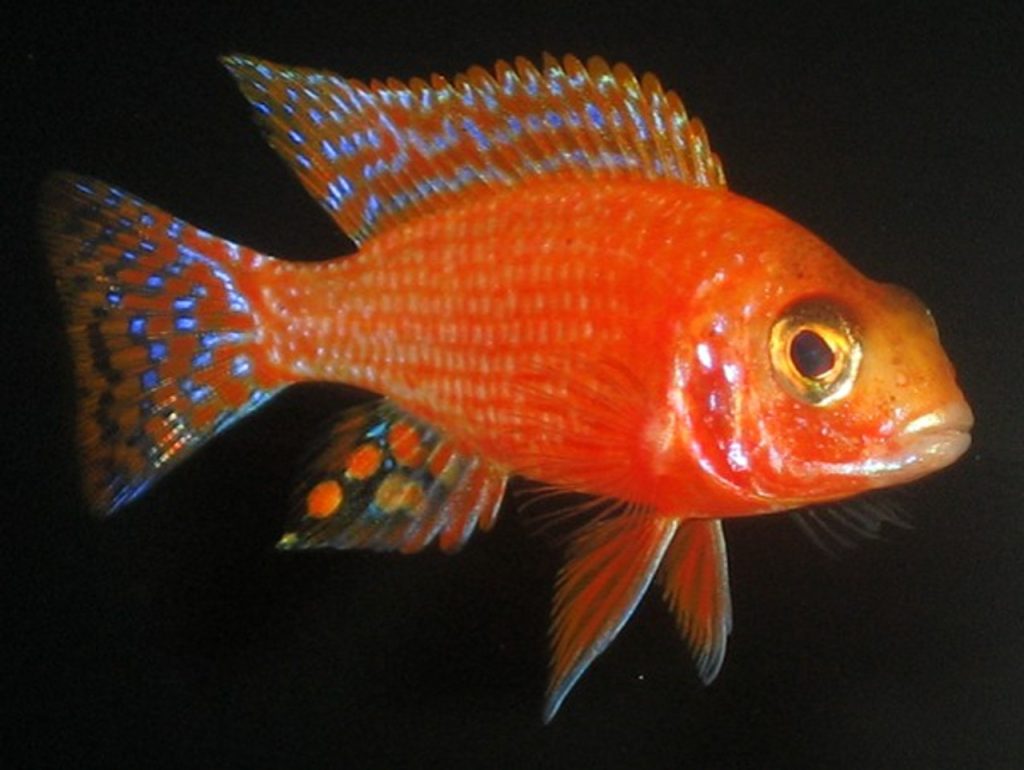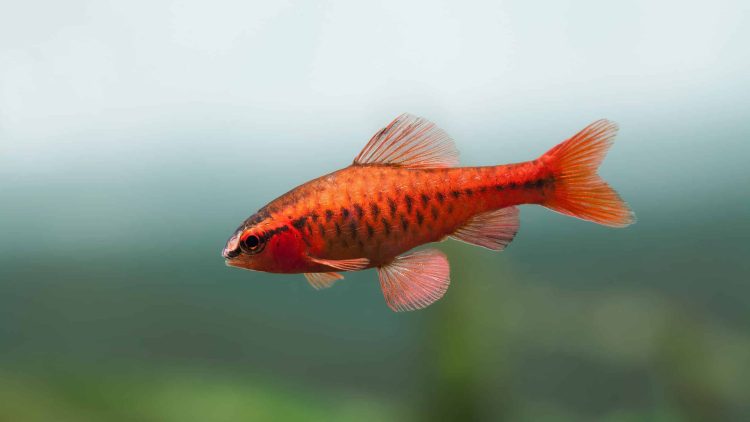Introduction to Ruby Fish:
A Dazzling Inhabitant of the Aquatic Realm
The Ruby Fish is a species that exhibits remarkable voracity when it comes to feeding and is relatively easy to cultivate. Their resplendence is matched by their tenacity, which is worth noting for prospective fish enthusiasts. However, their dominant nature and penchant for consuming fry make them suitable candidates for solitary confinement within the aquarium.
Dietary and Health Overview:
A Voracious Appetite and Hardy Nature
Boasting robust health and a considerable appetite, the Ruby Fish is a hardy being that flourishes in amiable aqueous conditions. They are not particularly finicky about water quality, thriving in a neutral pH and in temperatures exceeding 20°C. This omnivorous swimmer has no specific dietary preferences and relishes animal-based feed.
Nutritional Acclimation:
From Yolk to Feed Powder: A Ruby Fish’s Diet Transition
In the initial days following hatching, egg yolk serves as the primary nourishment. As they advance to five days old, a gradual introduction to standard feed powder begins. This acclimatization to dietary habits involves mixing egg yolk with feed powder in water to create a pasty consistency, gradually adjusting the proportions over six days until solely feed powder is administered, concluding a 20-day rearing period to raise fry to juvenile stage.
Additional Insights for Ruby Fish Enthusiasts:
Feeding Preferences:
What Does the Ruby Fish Relish?
- Ruby Fish Basics:
Known also as White Tail Fish or Red Coral Fish, the Ruby Fish hails from the warm waters of South America’s Amazon River basin. Their petite frame and vivid hues make them a favorite among aquarists. - Dietary Habits:
The Ruby Fish’s omnivorous pallet allows for a broad diet including live bait, freeze-dried worms, fish flakes, and algae. They naturally consume tiny plankton and benthic organisms such as insect larvae and small crustaceans. In aquarium settings, one can provide nourishment in the form of earthworms, bloodworms, silk worms, frozen insects, mixed fish pellets, or algae-based products. - Recommended Feed:
Given their omnivorous nature, various foods are suitable. Proposals include:- Live feed: Earthworms, silk worms, and the like.
- Frozen bait: Freeze-dried insects, shrimp, fish meat, etc.
- Pellets: Protein-rich, easily digestible pellets made specifically for Ruby Fish.
- Expanded feed: Swollen pellets as treats, without substituting main dietary sources.
Care Instructions:
Practical Tips for Raising Healthy Ruby Fish
- Regular, Measured Feeding:
Feeding should be moderate to prevent overeating, with 2-3 daily feeding sessions suggested to minimize water pollution and preserve the aquarium’s aesthetic. - Diversified Diet:
A varied diet is recommended to prevent nutritional monotony. - Water Quality:
Attention to water conditions is critical. Regular water changes and quality tests are essential, as poor water can lead to disease. - Observing Behavioral Cues:
Regular checks on body condition, activity, and appetite are vital for timely identification and resolution of issues.

In-Depth Care:
Environment and Nourishment:
Crafting an Idyllic Habitat for the Ruby Fish
- Temperature: As tropical fish, Ruby Fish prosper in water temperatures between 20-26°C.
- Water Quality: They prefer neutral, clean water. Weekly water changes, comprising a partial exchange, are beneficial in maintaining stability.
- Feeding Practices: A generous appetite calls for a diet of animal-based feed. Clean the feed before administration and feed twice daily, 3-8g per fish per feeding is ample.
The Ruby Fish Profile:
Vivid Appearance and Simple Upkeep
With an overall sturdy constitution and significant feeding needs, the Ruby Fish requires minimal water quality regulations. They adopt a fusiform shape with slightly compressed sides, flaunting a fan-shaped caudal fin and a remarkable palette ranging from algal green to a vibrant red underside. Their agile movement and shimmering scales create a living aquatic gemstone.
Final Note:
Caring for an Aggressive Beauty
The Ruby Fish’s hardiness and low maintenance are offset by its territorial aggression. Separation is key to prevent interspecies conflicts. Regular temperature and water quality management, coupled with controlled, clean feeding, pave the way to a thriving existence for this resilient tropical beauty.























































